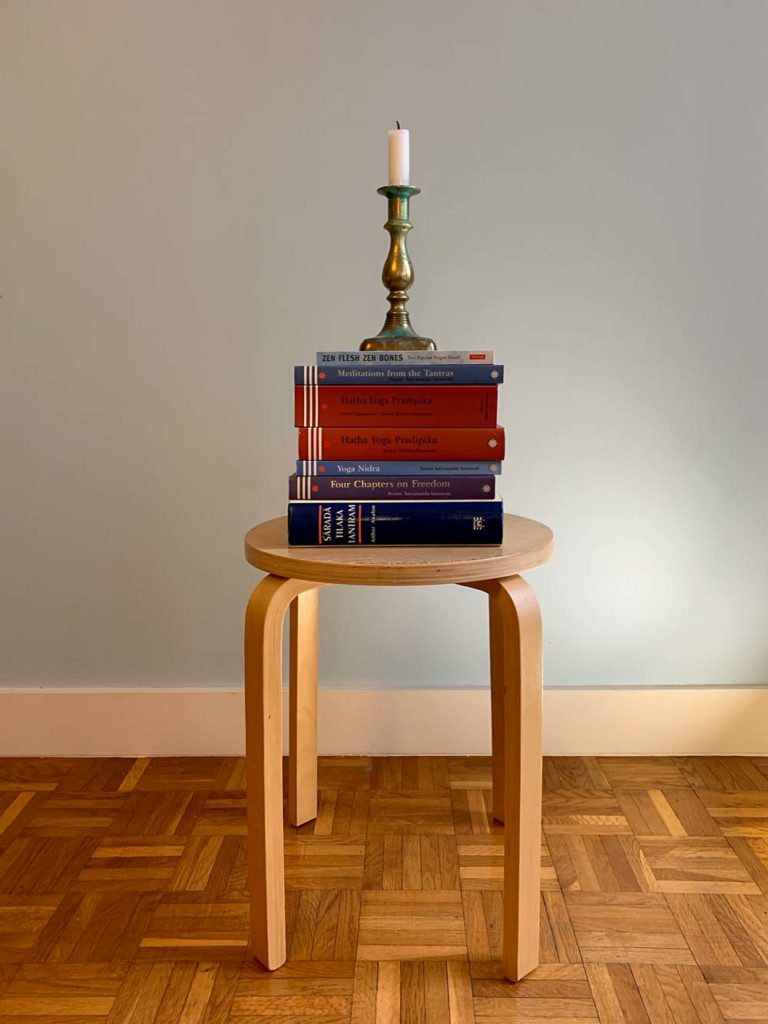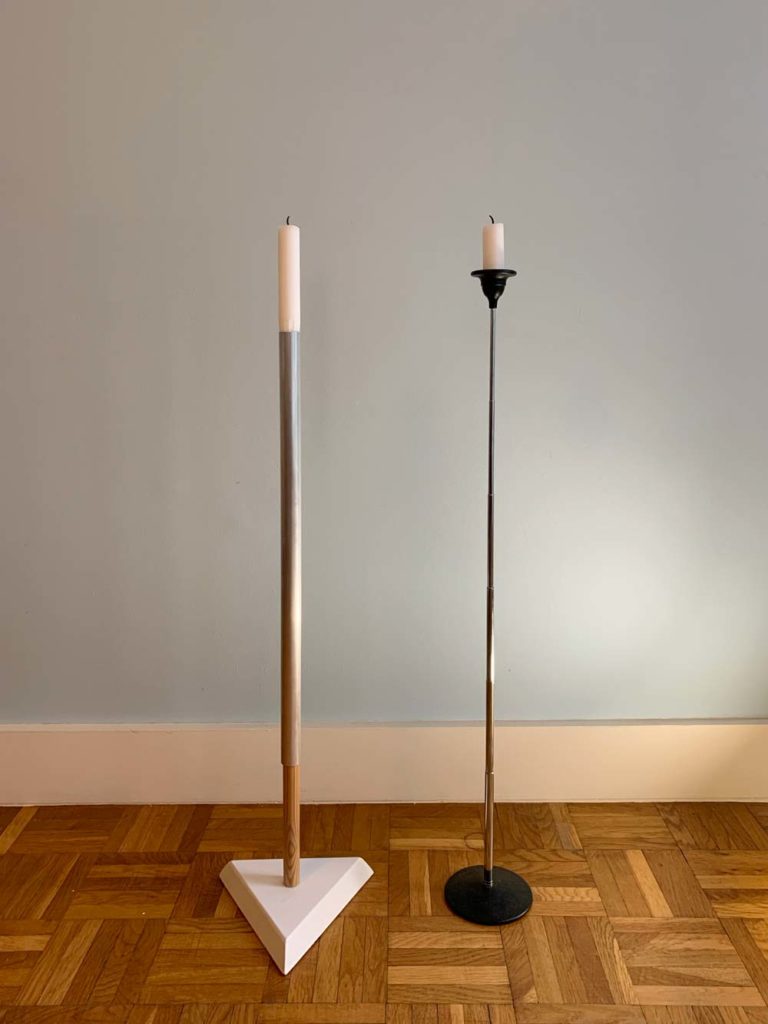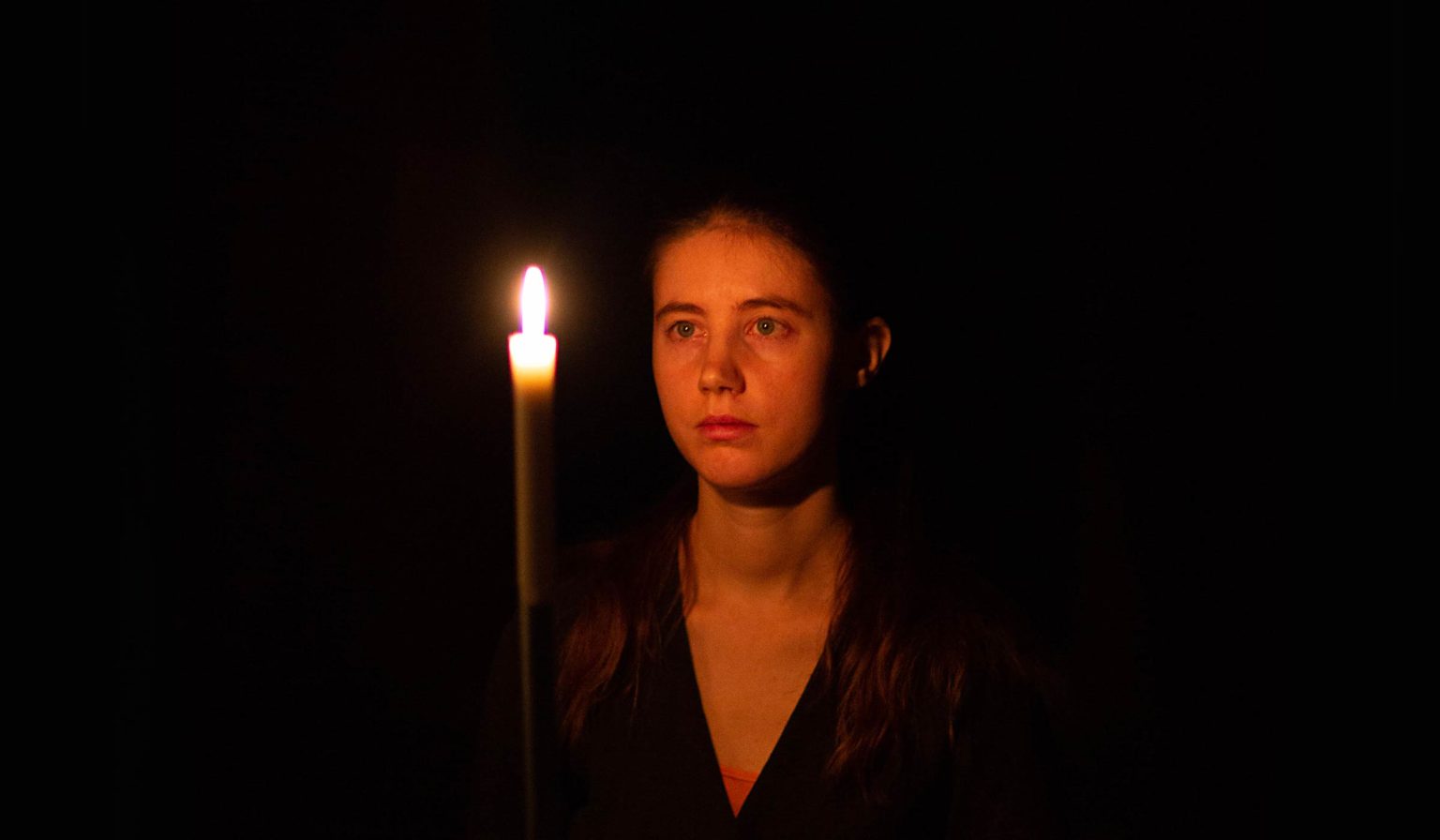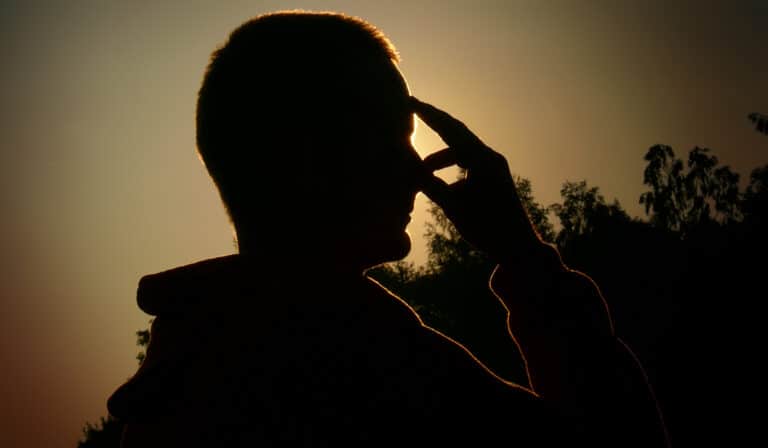Tratak is a concentration-based meditation. To practice it, you fix your gaze on a point. You direct your attention towards your concentration point, and you keep bringing it back to it. If done correctly, you will be able to strengthen your focus, and your mind will slowly move towards one-pointedness.
Instructions for tratak seem straightforward enough. But In reality, you could face many challenges that might ruin your practice. Therefore, let’s look at how to practice tratak and get it right from the start. I will give you full instructions.
What benefits can you get from tratak?
Tratak develops willpower, memory and concentration. It can also be an efficient method to eliminate complexes and phobias, to soothe nervous tensions, anxiety and insomnia. Tratak also helps to prepare you for deeper states of relaxation and meditation as well as help to develop the capacity to visualise. Besides, tratak can heal certain eye conditions and improve your eyesight.
What kind of object to fix your gaze at?
It is possible to choose between different concentration objects for tratak. However, the most common one and the one I suggest you opt for is to look into the flame of a candle. That is because the candle flame will leave a strong after image that you will be experiencing with closed eyes at the end of the session.
Other possible concentration objects include a yantra or a dot on the wall.
What you need to do to practice tratak well
To make your tratak practice shine, make sure to follow the indications below.
Practice in darkness
If possible, practice tratak in complete darkness. A semi-dark room will do as well but avoid a bright room. Also, think about eliminating air currents by closing windows; otherwise, the flame might flicker.
If you do tratak on a point on the wall or on paper, then the room should, on the contrary, be bright so that you can see your point. There should be a high contrast between your concentration object and the background. A black point on a white background is excellent.
Practice at the right time
Tratak is not particularly time-sensitive. You can do it at any time of the day that suits you on one condition: that you have digested your last meal. If not, you risk having a sleepy practice.
Place your candle correctly
Place your candle around 50 centimetres from your face with the wick just above eye level. If the wick is bent, place the candle so that the point of the wick is facing you.
There are candlesticks with adjustable heights made especially for tratak. But if you don’t have one, you can easily improvise placing an ordinary candlestick on a chair or similar. Adjust the vertical position to get it right by adding some books on top if necessary. If possible, place your candle so that the background will be dark, unified and without disturbances.


Use the right kind of candle
Get a good quality stearin candle to avoid dripping and soot stains. The quality of the wick is vital to get an adequate flame that stays stable. The wick should be one centimetre long to get a suitable flame. If it is too long, the flame will be too tall, and if it is too short, the flame will be too little.
Tealights are not great. Use a regular stick candle instead. I recommend the Jubla candles from IKEA. They are excellent and inexpensive.
Sit in a correct meditation pose
Sit in a meditation pose that allows for stability and immobility. I recommend sukhasana; it is easy for most beginners. If you can sit in a fancier meditation pose, without discomfort that is, of course, good too. But do avoid the tailor pose which is not a good alternative.
Take off your glasses and remove your contact lenses
One of the great benefits of tratak is that it trains your eyes. To get this effect, remove your glasses or lenses. If you keep your glasses on, your eyes don’t get the training they could. With contact lenses, it is worse still. The fixing of the gaze will likely be uncomfortable.
So unless you have a severe eye correction, keep your visual aids off.
Stay motionless
Stay perfectly motionless during tratak. Accept any slight bodily discomfort you may experience from sitting still. By staying motionless and accepting uncomfortable sensations, you will be able to surpass them.
Not reacting to discomfort is a skill that you develop gradually by practising meditation. If you are a particularly agitated person, try doing a few calming yoga poses before practice tratak or any other meditation for that matter. On my website, Forceful Tranquility, I often guide tratak after an extended programme of poses and breathing exercises. At that point, one is particularly receptive to it.
Practice tratak is a multi-step technique
Though the central part of tratak consists of looking at your concentration point, you should include several more steps. Before the gazing, first, spend several minutes of tuning in by feeling your body and then your natural breath. In the end, once you have closed your eyes after the gazing, you should take time to experience the after-image of the flame (or the dot).
Practising with these progressive steps guarantees a more profound practice.
Full instructions on how to practice tratak
Tratak consists of the following steps:
Body awareness
Breath awareness
Fixing your gaze in the flame
Seeing the after image
Feeling the eyebrow centre
Read on to learn the exact instructions for each step.
Body awareness
Sit down in your meditation pose and establish motionlessness. Keeping your eyes closed, feel your body. Feel your whole body, all different parts of it at once. Stay in your body with your attention and feel it from inside. Practice attentively.
Breath awareness
After some time, become aware of your breath. With your eyes still closed, follow your spontaneous breath. Try not to influence it in any way. Follow your breath in the nose. Feel the air flowing in, and out. Experience the flow of air on each in-breath and each out-breath.
Fixing your gaze in the flame
Now open your eyes and fix your gaze in the flame. You have two options. Either look at the glowing point on the top of the wick, if there is such a point. Or fix your gaze in the brightest part of the flame.
Choose the flame or the glowing point?
Fixing your gaze in the flame usually improves the next step, seeing the after image. Looking at the glowing point allows for superior practice in the gazing step. Find out which works best for you. If you look into the flame instead of the luminous point, then place the candle further away. Seventy-five centimetres to a metre from your face should be good.
Steadily, but without undue effort, look at your point of concentration. Try doing it without blinking. Stay with your attention in the flame at all times. Don’t think of anything else. If your attention moves elsewhere (which it very likely will) immediately bring it back. Make experiencing your concentration point your sole objective.
Don’t worry about the fluctuations of your mind. Just bring your attention back, again and again. If your willpower is strong, you will be able to do it more and more effortlessly. When your attention flows naturally towards your concentration object yogis calls it Dharana. Your mind is one-pointed.
Seeing the after image
Blow out your candle with the least movement possible and close your eyes. Now the after-image of the flame will appear if you are relaxed enough. Don’t worry if it doesn’t happen every time.
The after-image is simply the impression on the retina from the prolonged gazing. It will appear in the darkness behind your closed eyelids as a glowing point. It will stay for some time and then fade. Sometimes the image is bright, stable and crisp. Sometimes it will be blurry and diffuse. Observe it the way it appears to you. And notice how it changes and how it fades.
Even if your image disappears, it can come back. It can disappear and come back several times. But try to keep un uninterrupted contact with the impression of the flame.
If the image starts moving, don’t follow it. It is likely your eyes that are moving. Instead, fix the image. Ideally, place your image in the eyebrow centre.
With practice, this step will become more comfortable, and you will be able to keep in contact with the image longer and longer. Then the intensity of the practice will thus increase. The impression can then become a visualisation that you can keep for as long as you like.
Feeling the eyebrow centre
This step is optional, and I have added it mainly as a fallback option if the image does not appear or if it goes away quickly. It consists of focusing on the eyebrow centre and feeling any physical sensations here. Just like the other steps, do this with utter attention.
This fallback option is handy if you practice with a group since the after-image will behave differently for everyone. It is also useful if you practice with a recording.
Timing
Going through all the steps of tratak should last 10 to 30 minutes.
How to combine tratak with other techniques
Tratak is a powerful meditation on its own. Still, to make it even more beneficial, you can combine it with other yoga techniques in a more extended session. I am a big fan of that, especially since preparing with postures and breathing exercise helps beginners to discover tratak quickly.
You can place tratak at different points of your programme:
1. At the beginning of a session
Tratak can be the first practice in a series of tratak, asana, pranayama and meditation. The concentration you build up during tratak will then impact the remainder of the session.
2. Between pranayama and yoga nidra
Go on to tratak directly after pranayama, if you can without moving or changing your pose. In the end, do yoga nidra. Tratak will favour a profound and conscious relaxation.
3. At the end of a session
Tratak can serve as the final meditation of any session. The practices leading up to tratak will make concentration a lot easier and more powerful.
What about counter-indications?
As always, use common sense. If you have an eye condition that makes the gazing cause pain then practice with prudence. In case of doubt, be careful until you gain confidence. Modify the practice in case of undesired effects.
If you have epilepsy, you should practice on a dot instead of a candle. The same if you are oversensitive to light.
How often can you practice tratak?
You can practice tratak daily or just occasionally. For real consistent benefits, regular practice is best.
Special thanks to Anandananda for the cover photo.




